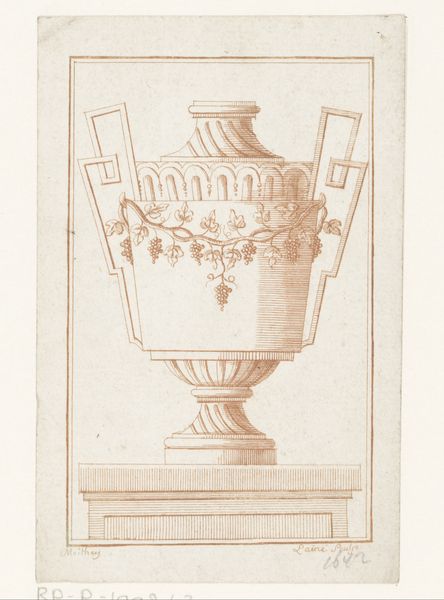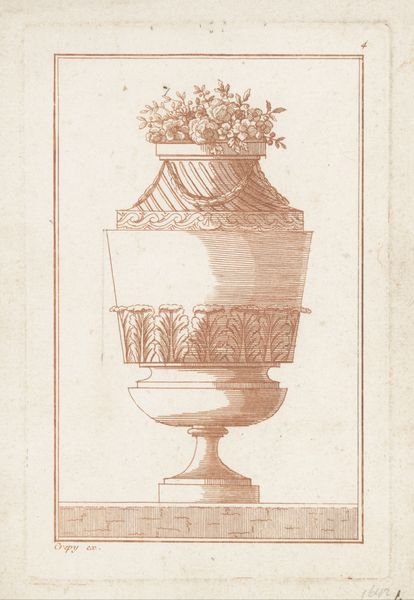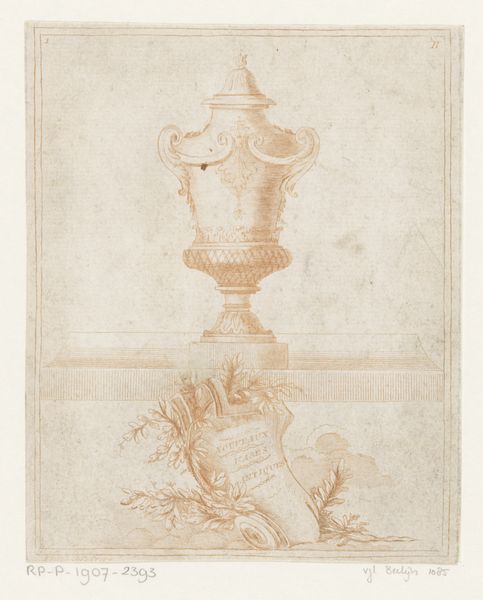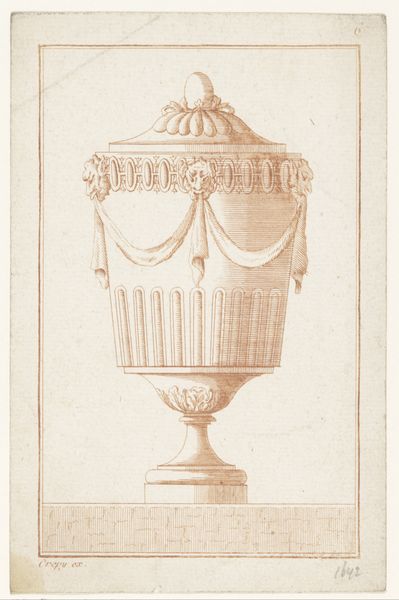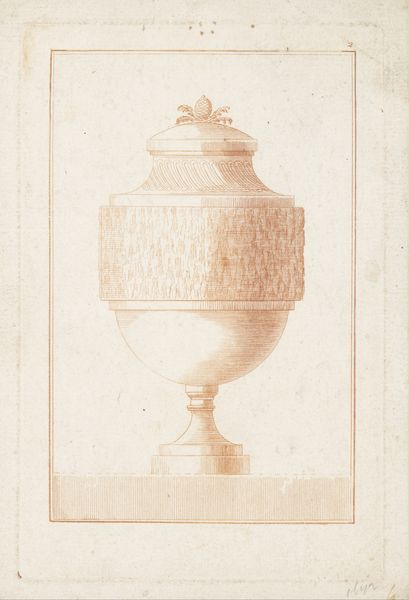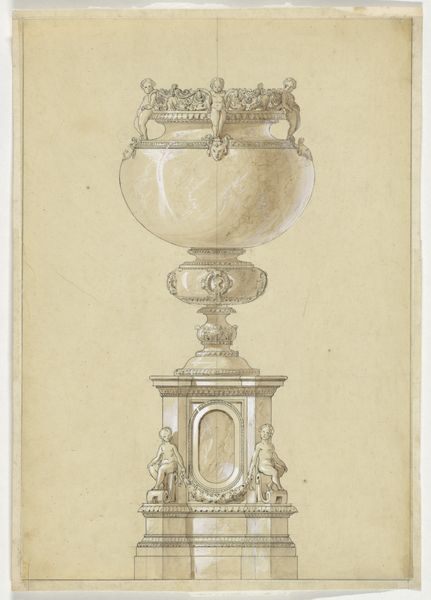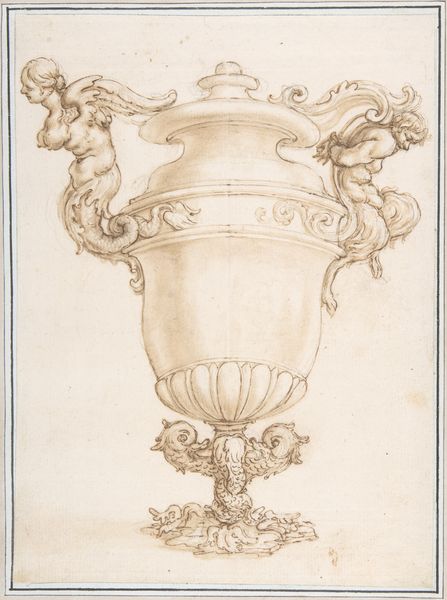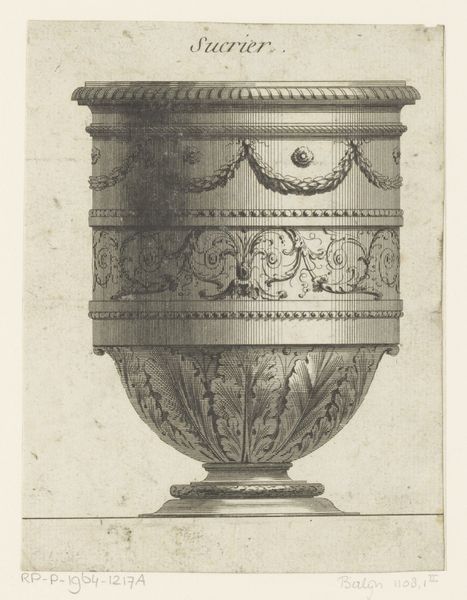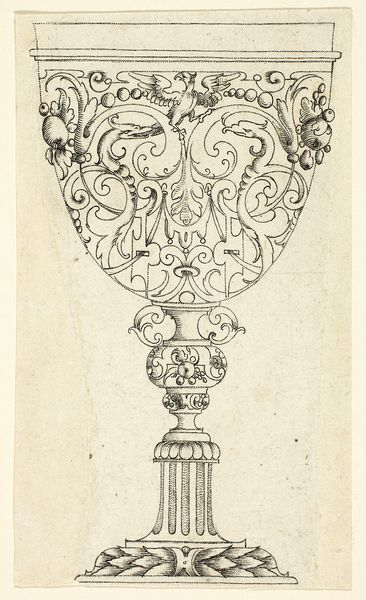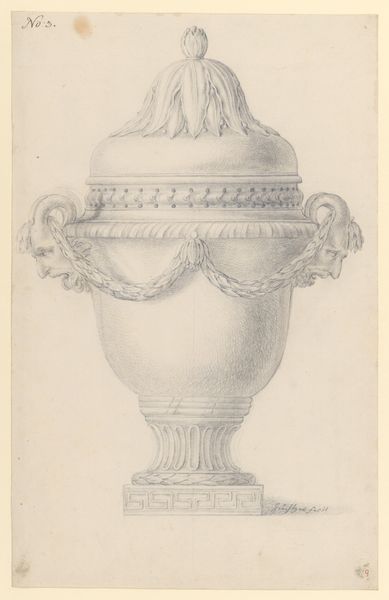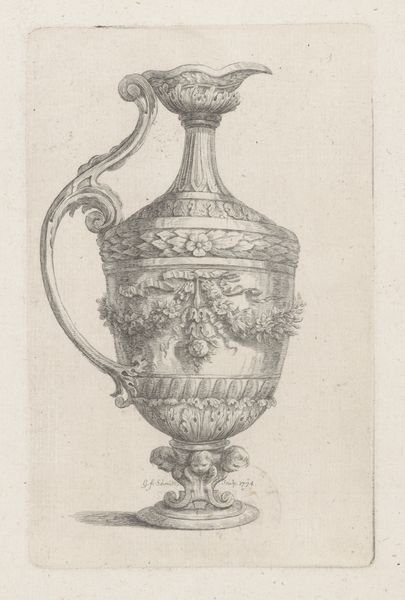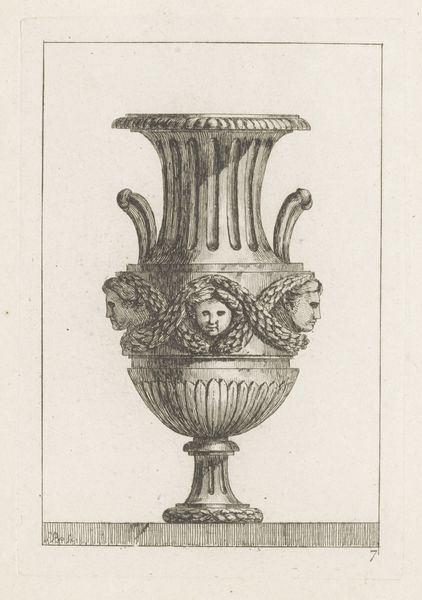
Dimensions: height 183 mm, width 118 mm
Copyright: Rijks Museum: Open Domain
Curator: My eye is immediately drawn to the elegance in this work. Editor: Elegance, yes, but also constraint. I’m drawn to the artist’s skillful use of line to suggest depth. Is this “Vaas met bloemen” by P. Moithey? The date suggests 1767. Curator: That's correct. The artwork is titled “Vaas met bloemen” or "Vase with Flowers". Made with engraving techniques, this piece is exemplary of Baroque decorative art. It’s quite revealing of the period's visual culture. I wonder what messages its formal elements communicate. Editor: The fact that this "flower vase" appears to be a drawing suggests an intent beyond mere function. It exists as an object of contemplation. We must remember that Baroque aesthetics are born out of religious conflicts between Catholic and Protestant Europe. Curator: Ah, situating it within the power struggles of the time – I like that. Baroque art, used as a tool to establish Catholic dominance, often employed elaborate details and strong visual persuasion. In what ways could an ornate vase design reinforce such dominance? Editor: Consider the historical role of the aristocracy and the Church in commissioning and controlling art. This piece could function within Baroque ideals, promoting wealth, authority, and lavish lifestyles. Imagine the conversations at that time involving politics. I think the line work, which defines and almost cages this object, offers visual boundaries, solidifying social hierarchy. Curator: Fascinating. Your attention to the dynamics of patronage expands my thinking. It forces us to consider who commissioned it, for what space it was made. The choice of flowers is intriguing too. While flowers typically carry multiple meanings across different social classes, could they be seen as symbols connected with religion? How might they represent religious virtue, luxury, and spiritual ideas that justify inequalities within society? Editor: These aesthetic decisions, while subtle, echo social inequalities. Analyzing this within the context of art's broader role, particularly its public consumption, exposes deeper connections. Curator: Indeed, the political and social currents of Baroque artwork shape how we can understand “Vaas met bloemen." The vase becomes a cultural symbol reflective of a time characterized by inequality. It really inspires thought about art and power. Editor: And how these dynamics are always relevant even now.
Comments
No comments
Be the first to comment and join the conversation on the ultimate creative platform.
